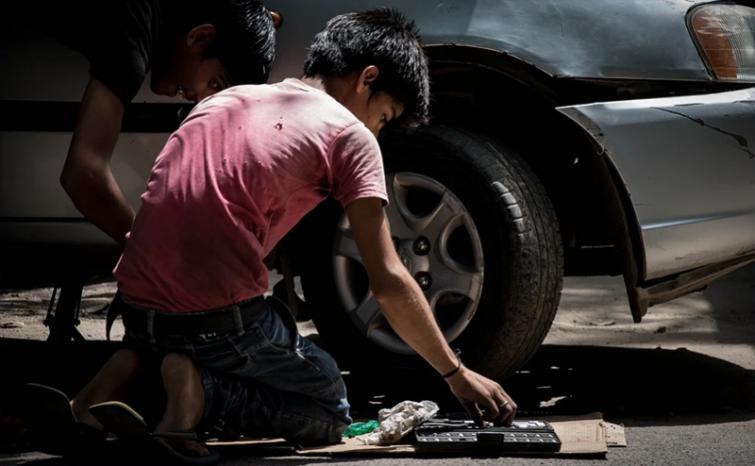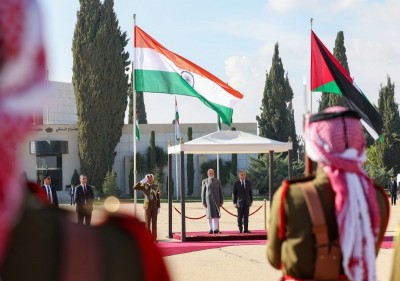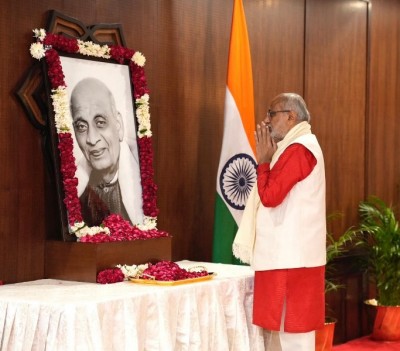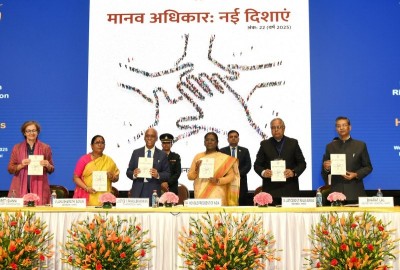
Child labour may see rise in COVID times: Experts
New Delhi: The unprecedented humanitarian crisis caused by the COVID-19 pandemic has already had a huge impact on Indian economy, and there are high chances that child labour in home-based enterprises, agriculture and in hazardous occupations may see a steep rise in the coming months.
With a huge impact caused by the COVID-19 pandemic on the already struggling Indian economy, financial insecurity in poor households increased due to massive loss of work and wages and reduced employment opportunities, thus making children more vulnerable.
They are likely to be pushed into unskilled labourto compensate for the economic loss and to supplement dwindling family income, especiallythe older children, who are experiencing the struggle of their families and loss of livelihood. In all likelihood, these children may choose to work instead of study to help their families in future.
In this context CRY – Child Rights and You organised an e-consultationto underscore how the COVID-19 pandemic will affect the situation of child and adolescent labour in India.
As the two hour-long session unpacked multiple reasons of the imminent increase of child labour in agriculture and family enterprises, it also highlighted how the recent labour law relaxations in some states will have its far-reaching effects on adolescent labour while exploringthe collective effort of civil society and state can combat child labour.
The experts’ panel was chaired by PriyankKanoongo, Chairperson, NCPCR (National Commission for Protection of Child Rights) and includedRahul Sapkal, Asst. Professor, Centre for Labour Studies , Tata Institute of Social Sciences (TISS); Protiva Kundu, Additional Coordinator- Research, Centre for Budget and Governance Accountability (CBGA) and Ashok Kumar, Convener of National Advocacy at CACL (Campaign against Child Labour). The panel discussion was moderated by Puja Marwaha, CEO at CRY.
PriyankKanoongo, Chairperson of NCPCR, who chaired the panelhighlighted that it is crucialto use existing laws efficiently to address child labour. “We need to ensure that we are using the existing laws, not sitting and feeling helpless. Number of FIRs filed so far is extremely poor compared to the large number of child labour in the country. Therefore, it is everyone's responsibility to report and file FIRs on child labour. I also appeal to civil society organisations to help strengthen reporting mechanisms and compensation/rehabilitation schemes to address child labour in the country,” said PriyankKanoongo.
Puja Marwaha, CEO at CRY said, “I truly resonate and believe that only the time all Indians start believing that children below 18 years don’t have to work because they are poor or for any other reason, it is that day we will actually start changing the situation. The advent of COVID-19 seems to be one major contributing factor to undo all efforts made in reducing and ending child labour. Though Child protection programming is vital to resolve the issue, CRY believes that the mechanism will be effective only when there is convergence amongst key departments of Women and Child Development, Education, Labour, Health and Home Affairs.”
Rahul Sapkal, Asst. Professor, Centre for Labour Studies, Tata Institute of Social Sciences (TISS) said, “The changes in labour laws will weaken enforcement mechanism which may further increase child labour amid this crisis. The Child Labour legislation needs to be revised as many aspects of climate change and hazardous industries are not yet incorporated. This revision must include revisiting the definition of what constitutes as hazardous industries keeping the developing capacities of children in mind.”
Protiva Kundu, Additional Coordinator- Research, Centre for Budget and Governance Accountability (CBGA) said, “COVID-19 crisis will definitely lead to surge in child labour. Government should expand the coverage of NCLP scheme in all districts which is currently operating in 323 districts and spend on survey of identifying child labour. Also, it is high time to address drop outs in schools and government should expand RTE act upto class 12.”
Meanwhile,Ashok Kumar, Convener of National Advocacy at CACL (Campaign against Child Labour) added that,“For the next 5 years, there is vital need to only invest in children. Focus should be on full-fledged rehabilitation package to address child labour and extend RTE to higher secondary level so that child labour will be abolished.”
CRY recommendations to ensure that children are not engaged in work:
• The Union and State Governments need to make concerted efforts to improve the public health system along with strengthening social security, education and child protection mechanisms.
• Children from marginalized communities are at a high risk of dropping out of education, and the community level child protection mechanisms including the village child protection committees, along with Panchayati Raj Institutions, School Management Committees must track every child in their villages and ensure their safety, especially from trafficking, underage marriage and forced labour.
• Stringent enforcement of the child labour law, the Integrated Child Protection Services Scheme is critical to safeguard children from the impact of the COVID-19, including the fall outs of the economic slowdown. The government should also open special training centres with bridge classes in keeping with social distancing and other norms to help children make up for the academic loss.
• Ensuring continuation of education for all children, especially the ones from marginalised households would be critical at this juncture. While efforts have been made to continue education for children through remote teaching options such as online classes, radio, television etc., most children from poor families do not have access to these media. It is essential that adequate investments are made so that these families are given incentives to access these media for remote learning.
• Non-Government and Civil Society Organisations should support and strengthen government efforts, especially when it comes to identifying vulnerable children. They also join in the effort to build awareness and actas channels for multiplying children’s voices. They can also play huge role in reaching out to last mile child and families and help government to deliver the social protection schemes to children and their families.
Support Our Journalism
We cannot do without you.. your contribution supports unbiased journalism
IBNS is not driven by any ism- not wokeism, not racism, not skewed secularism, not hyper right-wing or left liberal ideals, nor by any hardline religious beliefs or hyper nationalism. We want to serve you good old objective news, as they are. We do not judge or preach. We let people decide for themselves. We only try to present factual and well-sourced news.







